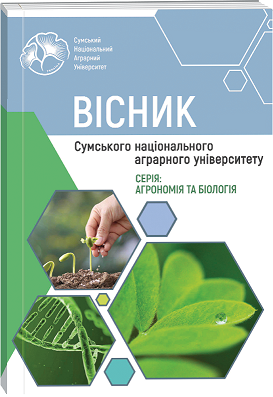ANALYSIS OF CRIMINAL PROCEEDING OF ILLEGAL LOGGING IN THE FORESTS OF UKRAINE
Abstract
The purpose of export bans, commonly known as ‘Timber Export Restrictions’, in many cases has both economic and environmental objectives. Environmental criminals are often involved in acts of corruption, money laundering, other related crimes. INTERPOL supports its member countries in strengthening their forestry law enforcement capacity and establishing international cooperation between national agencies. In this way INTERPOL analysing all types of information that facilitate or accompany illegal forestry activities. The research method used to analyse criminal implementations was the process of evaluating data based on criminal intelligence analysis (criminal intelligence analysis – CIA). This method supports the decision-making process of investigators, managers, supervisors and other law enforcement agencies to use their limited resources more efficiently and effectively and to ensure an analytics-based policing approach. The article presents the results of the analysis of the materials of criminal investigations into illegal logging carried out in the forests of Ukraine. The analytical materials of criminal investigations will become the basis for the development of preventive measures that can discourage illegal logging. Also, in the same time the obtained analytical materials of criminal investigations will influence the creation of new and improvement of existing legal acts regulating liability for illegal logging. An analysis of criminal investigations in Ukrainian forests has led to the conclusion that most of the time illegal logging is carried out in natural areas in the such zone as the Ukrainian Carpathians and Polissia (47.4%). The main amount of illegal logging was carried out in forest stands (44.8%) and forests with protected status (28.9%). The main forest species targeted for felling are pine (41.7%), acacia (22.7%) and oak (21.1%). The organisers of the crimes are mainly individual entrepreneurs who has own timber processing enterprises and storage facilities (65.2%). Then the material damage caused by illegal logging is mostly not compensated (75.8%). This article offers recommended approaches to implementing the main areas of combating illegal logging in our country. The analytical materials can become the basis for the development of preventive measures to reduce quantities of illegal logging in the forests of Ukraine.
References
2. Callister, D. J. (1999). Corrupt and illegal activities in the forestry sector: Current understandings and implications for World Bank Forest Policy (draft for discussion, prepared for the World Bank Group, Forest Policy Implementation Review and Strategy Development: Analytical Studies). Access mode: http://www.unece.lsu.edu/responsible_trade/documents/2003-2006/rt03_043.pdf.
3. Castaño, J. (2007). Sustainable Timber Trade: Are Discrepancies in Trade Data Reliable Indicators of Illegal Activities? Advancing Statistical Integration and Analysis: IV International Conference on Agricultural Statistics, Beijing, China.
4. Chang, Y. & Peng, R. (2015). Timber Flow Study: Export/Import Discrepancy Analysis. China vs. Mozambique, Cameroon, Uganda and DRC. IIED Issue Paper. London: International Institute for Environment and Development.
5. Chen, H.K. (2010). Lost in Transit: Export and Import Protocols as Contributors to Discrepancies in International Timber Trade Data. Jakarta: ASEAN REFOP.
6. Contreras-Hermosilla, A. (2002). Policy Alternatives to Improve Law Compliance in the Forest Sector. Proceeding of FAO meeting of experts “Peforming government policies and the fight against forest crime, 43–87.
7. Curtis, P.G., Slay, C.M., Harris, N.L., Tyukavina, A., & Hansen, M.C. (2018). Classifying drivers of global forest loss. Science, 361, 1108. doi: 10.1126/science.aau3445.
8. Eastin, I. & Perez-Garcia, J. (2004). Discrepancies in Forest Products Trade Statistics. Working Paper 95. Seattle: Center for International Trade in Forest Products.
9. Guangcui, D. (2003). Study on Discrepancies in Forest Products Trade Statistics. Beijing: China National Forestry Economics and Development Research Center, State Forestry Administration.
10. Hansen, M.C. (2013). High-Resolution Global Maps of 21st-Century Forest Cover Change. Science, 342(6160), 850–853. Access mode: www.jstor.org/stable/42620097.
11. Harris, N.L., Gibbs, D.A., Baccini, A., Birdsey, R., Bruin, S., Farina, M., & Tyukavina, A. (2021). Global maps of twenty-first century forest carbon fluxes. Nature Climate Change, 11, 234–240. doi: 10.1038/s41558-020-00976-6.
12. Hoare, A. (2015). Tackling Illegal Logging and the Related Trade. What Progress and Where Next? London: Chatham House.
13. Knauf, M. (2015). An Analysis of Wood Market Balance Modeling in Germany. Forest Policy and Economics, 50, 319–326. doi:10.1016/j.forpol.2014.09.013.
14. Konopelskyi, V.Ia. & Budiachenko, O.M. (2021). Kryminalna vidpovidalnist za nezakonnu porubku abo nezakonne perevezennia, zberihannia, zbut lisu [Criminal responsibility for illegal logging or illegal transportation, storage, or trade of timber]. ODUVS, Odesa (in Ukrainian).
15. Lawson, S. & MacFaul, L. (2010). Illegal Logging and Related Trade: Indicators of the Global Response. London: Chatham House.
16. Lawson, S. (2007). Illegal Logging and Related Trade: Measuring the Global Response. London: Chatham House. 17. Lawson, S. (2014). Consumer Goods and Deforestation: An Analysis of the Extent and Nature of Illegality in Forest Conversion for Agriculture and Timber Plantations. Washington DC: Forest Trends.
18. Li, R. & Buongiorno, J. (2008). Long-term effects of eliminating illegal logging in the world forest industries, trade and inventory. Forest Policy and Economics, 10(7), 480–490. doi: 10.1016/j.forpol.2008.04.003
19. Nellemann, C. & INTERPOL Environmental Crime Programme (eds.) (2012). Green Carbon, Black Trade: Illegal Logging, Tax Fraud and Laundering in the Worlds Tropical Forests. A Rapid Response Assessment. Arendal: United Nations Environment Programme, GRID-Arendal. Access mode: http://www.unep.org/ pdf/RRAlogging_english_scr.pdf.
20. Obsiahy nezakonnykh rubok, zadokumentovanykh lisokorystuvachamy Ukrainy u 2022: Analitychnyi zvit [Volumes of illegal logging documented by forest users in Ukraine in 2022: Analytical report] (2022). Proiekt Lisovoi sluzhby SShA “Borotba iz nezakonnymy rubkamy v Ukraini”, 57 (in Ukrainian).
21. Palmer, C.E. (2001). The Extent and Causes of Illegal Logging: An Analysis of a Major Cause of Deforestation in Indonesia. London and Norwich: Centre for Social and Economic Research on the Global Environment.
22. Pendrill, F., Persson, M., Godar, J. & Kastner, T. (2019). Deforestation displaced: trade in forest-risk commodities and the prospects for a global forest transition. Environmental Research Letters, 14(5), 1–14. doi: 10.1088/1748-9326/ab0d41.
23. Pokorny, B. & Pacheco, P. (2014). Money from and for forests: A critical reflection on the feasibility of market approaches for the conservation of Amazonian forests. Journal of Rural Studies, 36, 441–452.
24. Prasetyo, A., Hewitt, J. & Keong, C.H. (2012). Scoping Baseline Information for Forest Law Enforcement, Governance and Trade. Kuala Lumpur: FLEGT Facility Asia Regional Office.
25. Pysmenskyi, V., Kovalenko, A., Pylypenko, O., Aharkova, O., Kovalenko, V., & Holovkin, S. (2023). Dosudove rozsliduvannia nezakonnoi porubky abo nezakonnoho perevezennia, zberihannia, zbutu lisu: prakt. Poradnyk [Pre-trial investigation of illegal logging or illegal transportation, storage, distribution of forests: practical guide]. Ivano-Frankivsk: Suprun V. P. (in Ukrainian).
26. Shulga, A.M. (2017). Osoblyvosti subiekta zlochyniv proty zemelnykh resursiv [Features of the subject of crimes against land resources]. Yurydychnyi naukovyi elektronnyi zhurnal, 6, 331–335. Retrieved from Access mode: http://lsej.org.ua/6_2017/98.pdf (in Ukrainian).
27. Topchii, V.V. & Antipov, V.I. (Eds.). (2017). Aktualni problemy kryminalno-pravovoi vidpovidalnosti [Actual problems of criminal liability]. Vinnytsia: Nilan Ltd (in Ukrainian).

 ISSN
ISSN  ISSN
ISSN 



